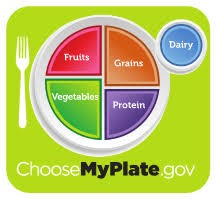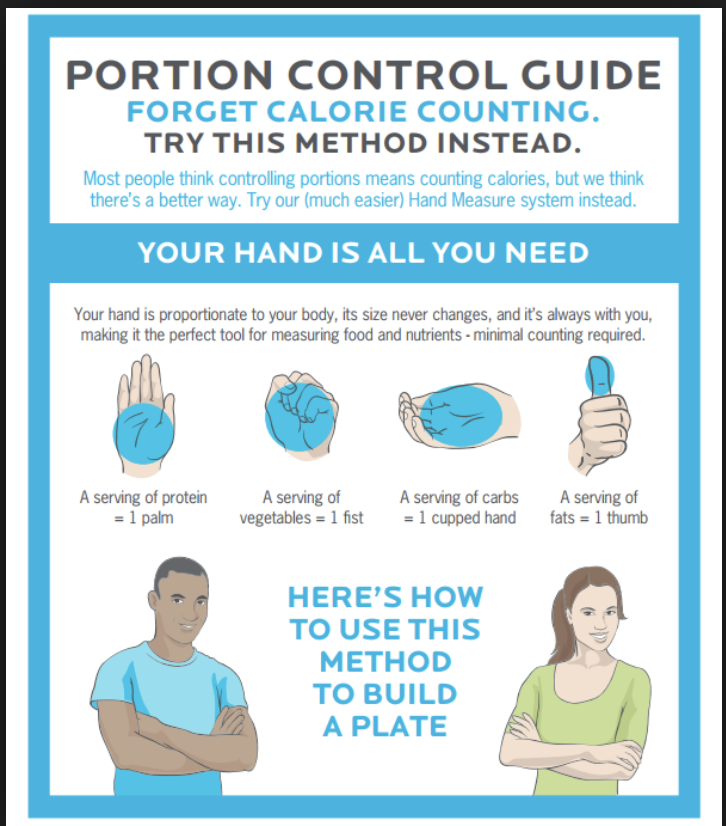Authored by Bri Higgins, Registered Dietitian for the Warren County Health District
We have all experienced it. You are in a terrible mood because you woke up late, got the kids to school, and had to rush to work. Thank goodness Pam from work brought in coffee! About an hour later, you hear your stomach grumble. Pam also brought in donuts. You told yourself you were going to say no, but the temptation is oh so torturous! You finally give in. By 11:30 am, your coworkers are ordering food for lunch: pizza, again. Can’t say no to that either! 2 pm hits and your energy is shot. You are having a hard time concentrating, you are irritable, and you are slow in productivity. It’s time for another coffee. By the time you are off work, it is all you can do not to lose it as the kids track a bunch of mud into the house-the hanger has set in. You eat almost a whole box of Cheez-It’s while preparing dinner. The kids wanted chicken nuggets, fries, and ketchup again, and you didn’t argue. You pop the frozen nuggets into the oven. Making two meals is way too much work, so you eat it too. By 9 pm, the kids are finally in bed, and you sit down to a bowl of chocolate ice cream all by yourself-your treat and reward for the hard day! By 10, you are ready for bed, but you have awful heartburn. You are up all night tossing and turning. The vicious cycle repeats itself the next day, and the day after that, and the day after that…
Our food choices from the very beginning of the day can influence our mood, energy levels, and productivity. The foods we choose can have a completely different impact on our bodily functions. Feeling like a hangry zombie all day does not have to be the norm. Follow these tips to get your eating, mood, and energy feeling better than ever.
Avoid skipping meals
What does the term “hangry” mean? It is a combination of the words “angry” and “hungry” used to describe the emotions a person feels when he or she has gone too long without eating an adequate meal. To combat this, most people should aim to eat every 3-4 hours to keep blood sugars and energy levels healthy and sustained. When you feel better physically, your emotions are a lot less likely to go awry.
Choose balanced meals with all the food groups represented.
To ensure your meal contains all the healthy components your body needs, model your food selections according to the My Plate diagram. The USDA introduced today’s MyPlate in 2011 as a graphic of a portioned plate aimed to provide a visual reminder of the importance of nutrition. The five food groups remained the same, but the recommendations encouraged personalization of food choices and better illustrated appropriate portion size on a per-meal basis (1). See below for how to put these plate methods in action.

Image 1
Also, include a wide variety of produce and be sure to select different colors. Pigments in fruits and vegetables contain different phytochemicals that impact all the ways our bodies work. For instance, one meta-analysis found that increasing fruit and vegetable consumption from fewer than three to more than five servings per day was associated with a 17% reduction in cardiovascular disease risk (2). Another meta-analysis suggested that the risk of coronary heart disease would decrease by 4% for each portion per day of fruits and vegetables added to the diet (3).The consumption of cruciferous vegetables such as broccoli, cabbage, and cauliflower has been associated with a decreased risk of prostate, lung, breast, and colon cancers (4). Heart disease is the leading cause of death in the U.S., and cancer is second. Be sure to incorporate more fruits and vegetables to lower your disease risk.
Carbohydrates are our preferred source of energy. It is a main source for brain function and is essential for body movements. Good examples of high-fiber carbohydrates include potatoes, sweet potatoes, beans, peas, corn, wheat breads and pastas, and fruit. Filling a quarter of your plate with these options is suggested by the USDA. Make half of your grains whole grains and try to limit consumption of refined carbohydrates such as white breads/pastas, baked goods/pastries, candies, cakes, syrups, juices, and chips. These foods can cause our blood sugars to rise and fall quickly, which can lead to energy crashes/hanger. These foods also cause us to crave less nutritious choices later in the day.
Protein is essential for maintaining muscle mass and allowing the body to feel satiated. Diets higher in protein have also indicated people are more successful at losing weight and burning fat (5). You can add in more protein by selecting a palm size or 20-30 grams of protein with each meal and snack (6). Select foods such as skinless grilled chicken, turkey, lean beef, eggs, and dairy. Choose a variety of high protein foods, and consider adding more fish. Two daily servings of soy protein are considered healthy for those choosing plant-based diets. Plant seeds such as beans, peas, lentils, and peanuts (legumes) are also great choices.
At least 8 ounces of seafood per week based on a 2,000 calorie diet is recommended for adults. Women who are pregnant or breastfeeding are encouraged to consume between 8 and 12 ounces of a variety of seafood per week, from choices that are lower in mercury such as salmon, tilapia, shrimp, crab, haddock, scallops, and whitefish. Not only is fish a rich source of protein, but it also contains vitamins B12 and D3 and the mineral iron. These nutrients help produce and maintain healthy nerves and blood cells, as well as bones and teeth (7). Fish and nuts also contain omega-3 fatty acids which have been shown to prevent and reduce symptoms of depression, ADHD, and bipolar disorder and protect against memory loss and dementia. Additionally, omega-three fatty acids have been known to battle fatigue, sharpen memory, and balance mood (8).
Choose healthy fats such as extra-virgin olive oil, avocado, and raw nuts and seeds. Aim for a thumb equivalent, or one tablespoon of healthy fats/oils with meals and snacks. Replacing fats such as butter and lard with these healthier fats may reduce inflammation and decrease risk of disease.
The U.S. National Academies of Sciences, Engineering, and Medicine determined that an adequate daily fluid intake is about 15.5 cups (3.7 liters, 125 ounces) of fluids a day for men and about 11.5 cups (2.7 liters, 91 ounces) of fluids a day for women. These recommendations cover fluids from water, other beverages, and food. About 20% of daily fluid intake usually comes from food and the rest from drinks (9). Adding lemon to water or infusing water with fruit is a great way to improve flavor and increase water intake. Also consider drinking seltzer water.
Adults should be consuming 400 mg or less of caffeine per day. That's roughly the amount of caffeine in four cups of brewed coffee, 10 cans of cola or two "energy shot" drinks. Drinking too much caffeine may result in side effects such as headaches, insomnia, nervousness, and irritability. Caffeine intake may hinder sleep and reduce daytime alertness and performance (10).
Consume alcohol in moderation
Moderate consumption of alcohol is defined as one drink per day for women and two drinks per day for men. In the U.S., 1 drink is usually considered to be 12 ounces of beer, 5 ounces of wine, or 1½ ounces of spirits (hard liquor such as gin or whiskey) (11). Drinks should be spaced out, as the consumption of 4-5 drinks in the course of two hours is defined as binge drinking (12). Alcohol can disrupt sleep and impact judgment. Additionally, alcohol may cause cancer. Alcohol interacts in potentially dangerous ways with a variety of medications, including acetaminophen, antidepressants, anticonvulsants, painkillers, and sedatives. It is also addictive, especially for people with a family history of alcoholism. Alcohol tends to play a larger role in violent crime and automobile accidents as well (11).
According to the American College of Sports Medicine and the Center of Disease Control, all healthy adults aged 18–65 years should participate in moderate intensity aerobic physical activity for a minimum of 30 min on five days per week, or vigorous intensity aerobic activity for a minimum of 20 min on three days per week. Furthermore, every adult should perform activities that maintain or increase muscular strength and endurance for a minimum of two days per week (13). In older individuals, exercise has been shown to improve brain and sleep. Additionally, exercise can decrease risk of fall-related injuries. With fewer injuries, there is less stress for elder care (14). Exercising safely should result in fewer health complications and fewer days missed from work.
To maintain a healthy diet and ensure a good relationship with food, balance, variety, and moderation are essential. Try to model your plate according to the My Plate visual with 80% of your meals. The other 20% can be used to indulge. By following this guideline, we can eat healthily without missing out on some of our favorite social activities. Without restricting too much we are less likely to binge eat or to become irritable. Eating a balanced portion of carbs, protein and fat every 3-4 hours ensures our energy levels and mood are sustained. A day in the life of a healthy eater is very much worth the time and effort.
You wake up feeling a little groggy, but the oats, fruit, and Greek yogurt you packed to eat at your desk this morning brings your energy levels up. You are ready to conquer the day! You snack on an apple and trail mix in the mid-morning, and you are ready for your chicken salad with cashew dressing for lunch. You are actually looking forward to eating your healthy meals! For once, you are not ravenous and snacking on everything when you get off work. You are grilling fish and vegetables for dinner. You are still working on getting the kids to like it, but your patience and stress levels are so much better! You go for a 30 minute walk after dinner, get the kids ready for bed, and shower. You hit that pillow and sleep like a baby until the next day!

Image 2